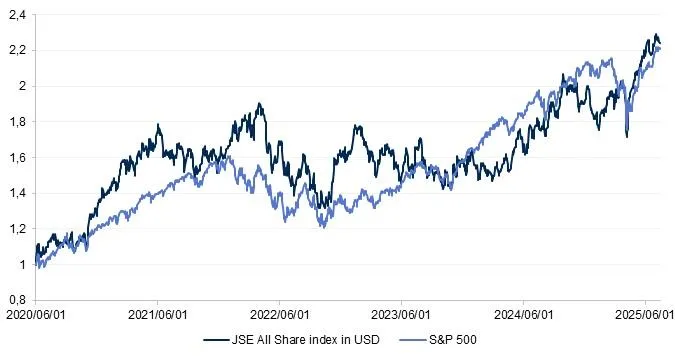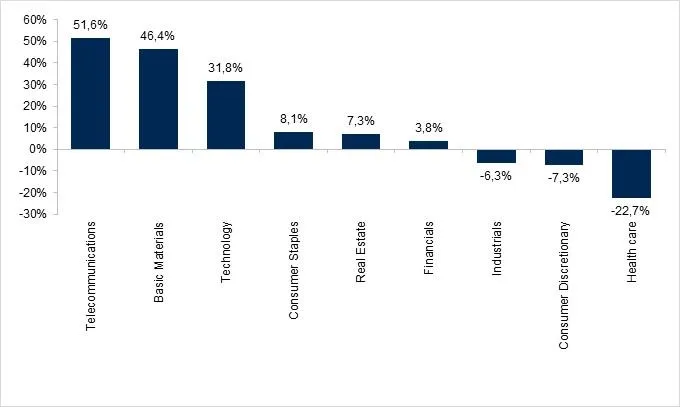Liberation Day to record highs: The hidden strength in SA equities

South Africa's own bourse has quietly delivered exceptional returns, says the author.
Image: Gianluigi Guercia / AFP
In a world beset by geopolitical tensions, trade disputes, and economic uncertainty, equity markets have continued to surprise on the upside. For South African investors, the post - "Liberation Day" rally has revealed a hidden strength in local equities that defies the broader narrative of emerging market vulnerability. While global headlines have been dominated by tariff threats, war-driven commodity fluctuations, and the resilience of US markets, South Africa's own bourse has quietly delivered exceptional returns.
Since the 2nd of April, now dubbed “Liberation Day”, the local and global equity markets have handled the turmoil like a champ. Despite, ongoing wars, oil price concerns and the renewed threat of steep tariffs from President Trump. The US equity market has continued to remain resilient and even rally since the last round of tariff threats.
The S&P 500 has recovered to record highs once again, with a return of about 24% since the bottom of the drop. Meanwhile, the VIX has recovered to normal levels signalling positive investor sentiment post April. The recovery was mainly driven by rallies in the tech and industrial sectors.
The South African equity market also performed impressively in the period, reaching all-time highs of its own, returning around 19% since Trump’s tariff turmoil began. Combined with the relative strengthening of the rand to the dollar, this has allowed the JSE All Share index to outperform the S&P500 over the last five years in dollar returns.

Figure 1: Total Return Index
Image: Prescient Investment Management, Bloomberg (as at July 2025)
This outcome is particularly striking considering the strong US equity exceptionalism narrative and the global shift towards dollar-based assets over the past decade The performance underscores that, over this period, the JSE All Share Index has been a surprisingly competitive investment option for both global and local investors!
However, despite these strong returns, foreign investors have remained persistent net sellers of South African equities, with nearly R150 billions in net outflows recorded so far this year. This trend underscores that the main beneficiaries of the market’s strong performance have been local and foreign investors who chose to stay, rather than new foreign capital inflows.
A major driver behind the stellar year-to-date performance has been the basic materials sector, notably gold miners, who have benefited from a roughly 28% increase in the gold price so far this year. The basic materials sector now accounts for about 21% of the All Share Index, only a few percentage points behind the financial sector’s 25% weighting. Meanwhile, the telecommunications and technology sectors have also delivered impressive gains, adding to the market’s broad-based rally.

Figure 3: Year to Date SA Sector Performance
Image: Source: Prescient Investment Management, Bloomberg July 2025
Looking ahead, investors will keep a close eye on the 1st of August, the deadline Trump has set for the next round of tariffs. This presents a new potential wave of uncertainty for markets. However, investors can take some comfort in knowing that while tariffs present a once-off upward shock to price levels, they are unlikely to impact long-term inflation expectations. Long-term inflation expectations are a key driver of forward returns for all asset classes, including bonds and equities. This component of the forward returns should, therefore, remain largely unchanged by tariffs even if they do come into effect.

Nicholas De Clercq
Image: Supplied
Nicholas De Clercq, Quantitative Analyst at Prescient Investment Management
*** The views expressed here do not necessarily represent those of Independent Media or IOL.
BUSINESS REPORT